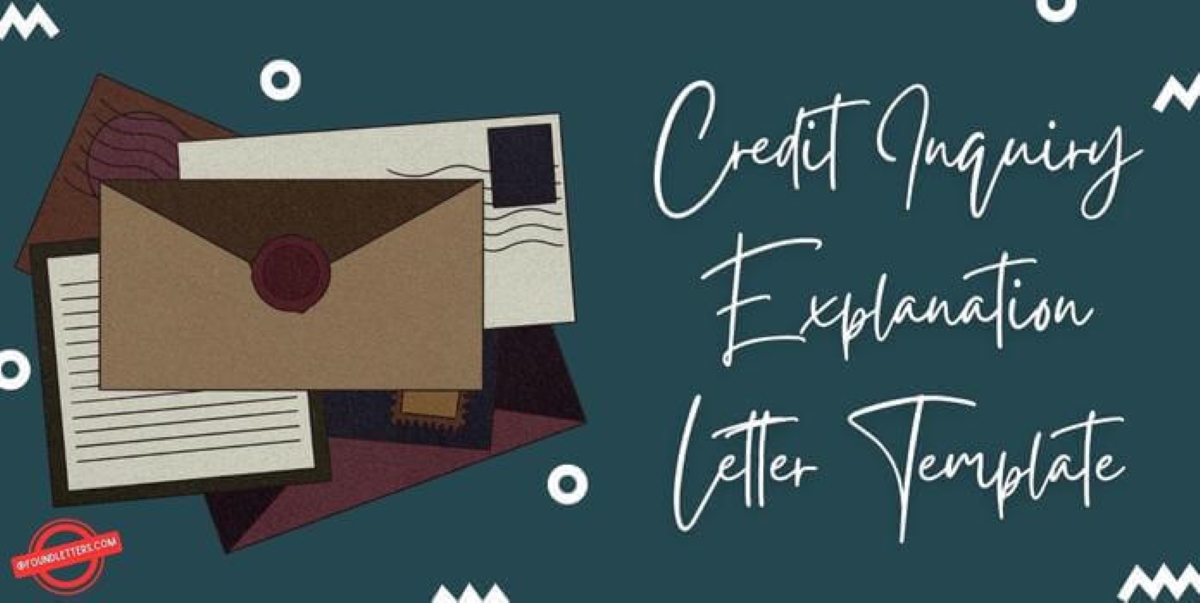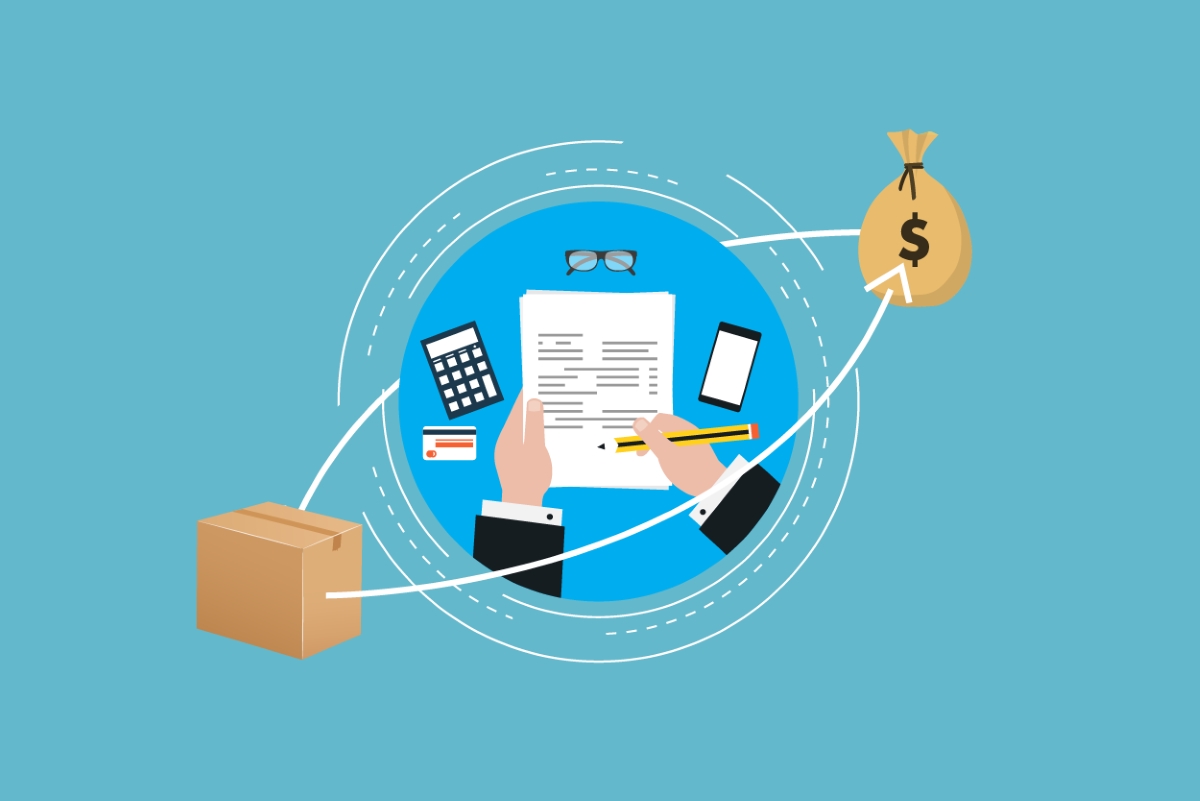

Finance
What Is A Goodwill Letter To A Credit Bureau
Published: March 4, 2024
Learn how to write a goodwill letter to the credit bureau to improve your finances and repair your credit history. Take control of your financial future.
(Many of the links in this article redirect to a specific reviewed product. Your purchase of these products through affiliate links helps to generate commission for LiveWell, at no extra cost. Learn more)
Table of Contents
**
Introduction
**
When it comes to managing your finances, maintaining a positive credit score is crucial. A good credit score can open doors to better interest rates on loans, credit cards, and mortgages. However, life is unpredictable, and financial setbacks can sometimes lead to negative marks on your credit report. One such blemish is a late payment, which can significantly impact your credit score.
Fortunately, there is a potential remedy for this situation in the form of a goodwill letter to a credit bureau. A goodwill letter is a powerful tool that allows you to request the removal of a late payment or other negative item from your credit report. While it's not a guaranteed solution, it can be an effective way to demonstrate responsibility and potentially improve your credit standing.
In this comprehensive guide, we will delve into the intricacies of goodwill letters, exploring when and how to write them, as well as providing a sample goodwill letter for reference. By understanding the nuances of goodwill letters, you can take proactive steps to address past financial missteps and work toward a brighter financial future.
Understanding Goodwill Letters
Understanding Goodwill Letters
Goodwill letters are formal requests sent to creditors or credit bureaus with the aim of appealing to their goodwill and requesting the removal of negative information from a credit report. These letters are based on the premise that everyone encounters challenging circumstances at some point, and they seek to convey a sincere explanation for the late payment or financial misstep.
It’s important to note that goodwill letters are not a legally mandated right. Creditors and credit bureaus are not obligated to honor these requests, and there is no guarantee of success. However, in cases where the late payment was an anomaly or resulted from a genuine hardship, a well-crafted goodwill letter can sometimes yield positive results.
When considering the impact of a late payment on a credit report, it’s essential to understand that such marks can remain on the report for up to seven years. This can affect an individual’s ability to secure favorable terms on credit products. By seeking to have the negative information removed, individuals aim to restore their credit standing and mitigate the long-term repercussions of a single financial misstep.
While goodwill letters are typically used to address late payments, they can also be employed to request the removal of other negative items, such as collections or charge-offs, from a credit report. In essence, these letters provide an opportunity for individuals to present their case and appeal for a second chance, emphasizing their overall creditworthiness and responsible financial behavior.
Understanding the purpose and potential impact of goodwill letters is essential before embarking on the process of crafting and submitting one. In the following sections, we will explore the optimal circumstances for writing a goodwill letter, the key elements to include, and the best practices for maximizing its effectiveness.
When to Write a Goodwill Letter
Knowing when to write a goodwill letter is crucial, as timing and context play significant roles in the likelihood of success. Generally, goodwill letters are most effective when the late payment or negative item on the credit report resulted from a one-time hardship or exceptional circumstance. Examples of such situations include medical emergencies, temporary job loss, or unforeseen personal challenges.
If the late payment was an isolated incident in an otherwise positive credit history, it may be viewed more favorably by creditors or credit bureaus. Additionally, if the individual has since demonstrated responsible financial behavior and maintained timely payments, it can strengthen the case for requesting the removal of the negative mark.
It’s important to consider the time elapsed since the late payment occurred. While there is no strict rule regarding the timing of a goodwill letter, it is generally advisable to wait at least six months to a year after the late payment before submitting the request. This waiting period allows for the demonstration of consistent, positive financial behavior and provides a stronger basis for appealing to the creditor’s or credit bureau’s goodwill.
On the other hand, if the late payment was part of a pattern of financial mismanagement or if multiple late payments have occurred, the effectiveness of a goodwill letter may be diminished. In such cases, it may be more prudent to focus on proactive measures to improve credit standing, such as maintaining timely payments and reducing outstanding debt.
Ultimately, the decision to write a goodwill letter should be informed by a genuine assessment of the circumstances and a realistic evaluation of the likelihood of success. When the timing and context align to present a compelling case for goodwill consideration, individuals can proceed with crafting a well-structured and persuasive goodwill letter.
How to Write a Goodwill Letter
Writing an effective goodwill letter requires a thoughtful and strategic approach. The goal is to convey sincerity, take responsibility for the late payment, and present a compelling case for why the negative item should be removed from the credit report. Here are key steps to consider when crafting a goodwill letter:
1. Personalization: Begin by addressing the letter to a specific individual whenever possible. This could be a customer service representative, a credit manager, or another relevant contact at the creditor or credit bureau. Personalizing the letter demonstrates a genuine effort to connect with the recipient and can enhance the likelihood of a positive response.
2. Conciseness and Clarity: Keep the letter clear, concise, and focused. Clearly state the purpose of the letter in the opening paragraph, and provide a brief but detailed explanation of the circumstances that led to the late payment. It's important to maintain a respectful and professional tone throughout the letter.
3. Expressing Accountability: Take responsibility for the late payment without making excuses. Acknowledge the mistake, and emphasize that it was an isolated incident that does not reflect your overall financial responsibility.
4. Demonstrating Positive Change: Highlight any positive changes or actions taken since the late payment. This could include maintaining timely payments, reducing debt, or participating in financial education or counseling programs. Demonstrating proactive efforts to improve financial management can bolster the credibility of your request.
5. Polite Request: Clearly and politely request the removal of the negative item from your credit report. Express gratitude for the consideration of your request and convey hope for a positive resolution.
6. Supporting Documentation: If applicable, consider including supporting documentation, such as proof of timely payments, letters of recommendation, or evidence of financial hardship. This additional documentation can provide substantiation for your claims and strengthen your case.
7. Professional Closure: Close the letter with a professional sign-off, such as "Sincerely" or "Respectfully," followed by your full name and contact information.
8. Follow-Up: After sending the letter, follow up with the recipient to ensure its receipt and to express appreciation for their consideration.
By following these steps and carefully tailoring the content to the specific circumstances, individuals can maximize the effectiveness of their goodwill letter and increase the likelihood of a positive outcome.
Sample Goodwill Letter
Below is a sample goodwill letter that illustrates the key elements and tone to consider when crafting your own. Remember to personalize the content to reflect your specific situation and maintain a respectful, professional demeanor throughout the letter.
[Your Name]
[Your Address]
[City, State, Zip Code]
[Your Email Address]
[Your Phone Number]
[Date]
[Creditor or Credit Bureau Name]
[Creditor or Credit Bureau Address]
[City, State, Zip Code]
Dear [Recipient’s Name or Department],
I am writing to you with the utmost sincerity and respect to request your consideration in reviewing the late payment reported on my credit account. I understand and acknowledge the importance of maintaining a positive credit history, and I am reaching out in the hope of appealing to your goodwill in this matter.
In [Month and Year of Late Payment], I experienced an unexpected medical emergency that resulted in financial strain and temporary hardship. As a result, I regrettably missed a payment on my [Creditor Name] account. I take full responsibility for this lapse and understand that timely payments are essential to upholding my financial obligations.
Since that challenging time, I have taken proactive steps to stabilize my financial situation and prevent similar hardships in the future. I have prioritized financial literacy and management, and I am proud to share that I have consistently made on-time payments on all my accounts since the incident. Additionally, I have [briefly describe any other positive actions or changes made].
Given the exceptional circumstances surrounding the late payment and my demonstrated commitment to responsible financial management, I kindly request your consideration in removing this negative mark from my credit report. I am deeply grateful for your time and attention to this matter and sincerely hope for a positive resolution.
Thank you for your understanding and consideration. I look forward to the opportunity to restore my credit standing and am committed to maintaining a positive financial trajectory. Please feel free to contact me at your convenience should you require any further information or documentation.
Sincerely,
[Your Signature]
[Your Printed Name]
It’s important to customize the letter based on your unique circumstances and to ensure that it reflects a genuine and respectful tone. By following the structure and approach demonstrated in this sample goodwill letter, you can effectively present your case and appeal for the removal of negative items from your credit report.
Conclusion
Navigating the complexities of credit management and striving to maintain a positive credit score can be a challenging endeavor. However, the utilization of goodwill letters presents a proactive and potentially impactful approach to addressing past financial setbacks. While not a guaranteed solution, a well-crafted goodwill letter can demonstrate accountability, highlight positive changes, and appeal to the understanding and empathy of creditors and credit bureaus.
Understanding the optimal timing and context for writing a goodwill letter is essential, as is the careful crafting of its content. By acknowledging the mistake, expressing accountability, and demonstrating positive changes, individuals can present a compelling case for the removal of negative items from their credit reports. Personalization, conciseness, and a respectful tone are key elements that can enhance the effectiveness of a goodwill letter.
It’s important to approach the process with realistic expectations, as success is not guaranteed, and creditors and credit bureaus are not obligated to honor goodwill requests. However, for individuals who have experienced a one-time hardship and have since maintained responsible financial behavior, a goodwill letter can serve as a proactive step toward mitigating the impact of a late payment or other negative item on their credit report.
By following the guidelines outlined in this comprehensive guide and leveraging the sample goodwill letter provided, individuals can approach the task of writing a goodwill letter with confidence and strategic intent. While the outcome may vary, the proactive effort to address past financial missteps and work toward a positive credit standing is a valuable endeavor that aligns with the principles of responsible financial management.
Ultimately, the goodwill letter represents a compelling opportunity to appeal for a second chance, demonstrate growth and responsibility, and pave the way for a brighter financial future. As individuals navigate the intricacies of credit management, the goodwill letter stands as a testament to the proactive measures that can be taken to address past challenges and pursue financial stability.














